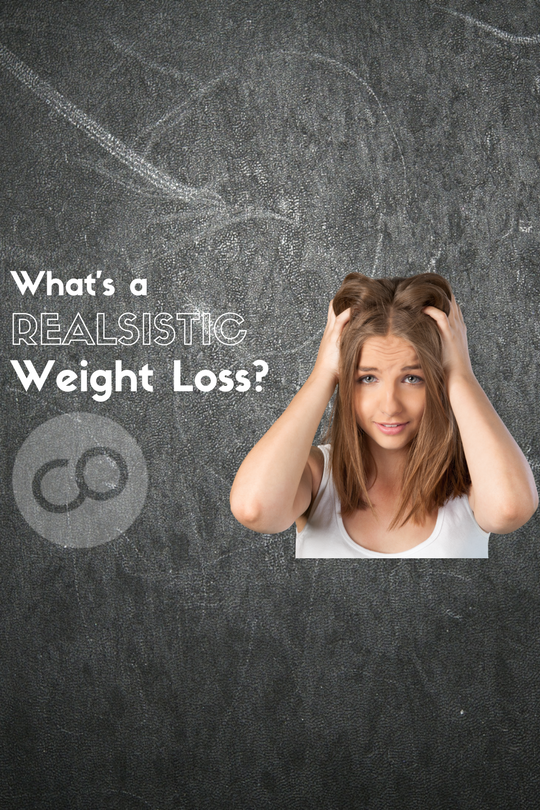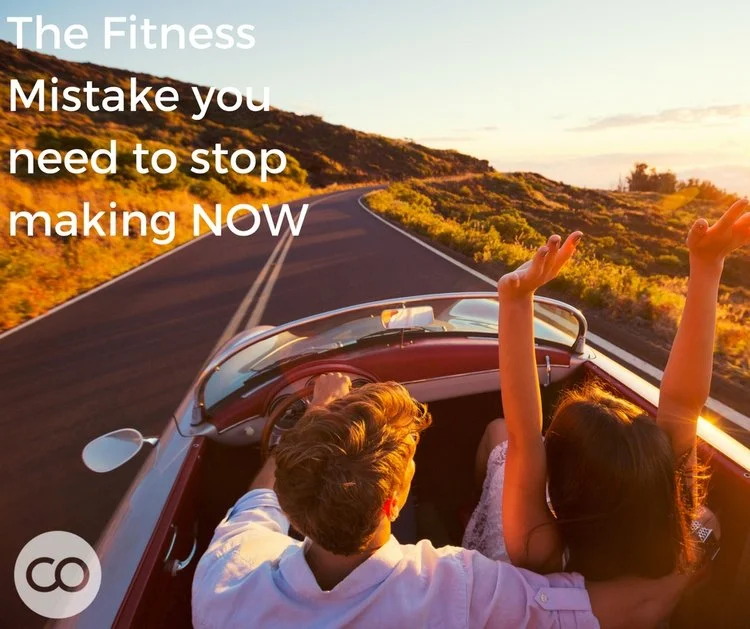Coach Thomas started his 80+ pound weight loss transformation by signing up for a Spartan Race. Now, 3 years and a half a dozen races later, we caught up with him in an interview to learn more about why everyone should sign up for a spartan race, learn more about his training, and his least favourite obstacles.
NEW: SWAT Training
Realistic Weight Loss
Grocery Shopping 101
80% of health and weight loss comes from nutrition. But before you can start eating healthy, you have to learn how to shop healthy!
Here are our top tips for navigating the grocery store and setting your meal preparation, and your week of nutritional success.
Tips For Being a Professional Shopper:
1. Know Before You Go
What is it that you need? Break your list into macronutrient categories. For example, Protein, Carbohydrates, Healthy Fats, and Miscellaneous items (think herbs, spices, etc... not things down the junk aisle). Personally, I arrange my grocery list in order of the items and aisles at the grocery store (I am sure that I could shop blindfolded).
2. Shop the Perimeter
Did you know that the whole food options surround the entire grocery store? Start here. Make one lap around the outside of the grocery store, picking up all of your essential items. Most, if not all of your items should come from this area, with the exception of any frozen vegetables and fruits. After you have shopped the perimeter, venture down any aisles that you know that you need items from. Stay away from aisles you don't need anything from. Purposeful shopping will help keep us on track nutritionally, and financially.
3. Don't Shop Hungry
You've heard it before, and I'll tell you again. Do not shop on an empty stomach. Studies have shown that customers who shop on an empty stomach not only purchase more, but also purchase items that are not on their list, and items that are less nutritionally dense. Surprisingly, this is proven not only in the grocery store, but across the spectrum. One study concluded that even when shopping for office supplies, customers were likely to purchase more items, and spend more money when hungry. Eat your healthy snack, and then shop for best results.
4. Read Labels
While you may feel silly picking up multiple items and comparing the food labels, it will make a significant difference in your waistline. Labels can be extremely misleading. As a general rule of thumb, choose items with the least amount of ingredients (5 or less), and with ingredients that you can pronounce. While many disclaimers can be misleading ("low fat", "sugar free", "low calorie") look at the macronutrient values, the sugar and sodium contents, and the serving size. Sobey's "blue label" items are often wise choices when compared to other brand label choices such as pasta sauces and canned items.
5. Go Local
When possible, look for local, natural, and organic sources when available. The local farmer's market in the summer is a great place to get local produce and establish connections. Although not all farmers markets run year round, you can often contact them to purchase farm raised eggs or look for locally grown grain products at select stores in the community. Here, you can purchase many locally grown items at Nutter's.
6. Clip Coupons
Extreme Coupon-ing isn't only for television. Look at flyers ahead of time and make your lists according to the flyers. There are often key items on sale, and you can even begin to catch on to the rotating sales. For example, chicken breasts cycle on sale every 3-4 weeks, so I will stock up, portion some out in freezer bags and be set until the next sale.
7. Get Creative
I try to look at the flyer each week, and choose one item that is on sale, or one new item I don't regularly purchase, and try to come up with a healthy and creative way to cook it. Sometimes I use my own cravings and creativity, and sometimes I will use pinterest for inspiration. For example, cauliflower was on sale, so I bought a head and made cauliflower buffalo bites by broiling cauliflower in the oven and then tossing it in a mixture of greek yogurt, ranch spices and franks red hot. I also bought a rutabaga and made rosemary parmesan "fries" by slicing up the rutabaga, tossing it in parmesan olive oil, fresh rosemary, and sprinking with fresh parmesan and then roasting it in the oven until the fries were crisp. Incorporating new foods is fun, and is key in keeping variety in the diet - both for sanity and nutrient wise. Eating the same foods day in and day out can actually lead to nutritional deficiencies.
Smart shopping is essential to keeping nutritious foods stocked and readily available.
The Most Important Workout You Can Do This Week
Little did you know, the most important workout you can do this week can be done at home.
If you're serious about getting results, there is one workout that will help you more than anything else. It doesn't involve burpees, running, or even heavy lifting. The most important workout that you can ever do is not even performed in the gym, it takes place in the grocery store, and the kitchen.
Time and time again, I hear people say, "I don't have time to eat healthy", "I don't have time to meal prep", and to those new to fitness and nutrition, "well, I'm exercising, so I don't need to eat healthy". Yet, I often see these very same individuals at the studio multiple times a week.
I understand what it is like to be busy, to be run off your feet, living off of coffee and pre-workouts just to survive the work-week and still make time to exercise. But if you've ever been there, or this is you. I want you to do something, I want you to skip your next workout.
You heard me. I want you to skip your next workout.
If you do not have your nutrition planned for the week, meals prepared and ready to go, or time carved out this week to prepare and eat nutritious meals, then you need to skip your next workout and prioritize your nutrition instead.
While this may seem like a foreign concept, when you do the math, it makes complete sense. Sure, you can burn anywhere from 300 calories and up per fitness class. But there are also 3500 calories in one pound of fat. And if you're not prepared and making poor food choices during the week, you will most likely be taking in additional calories above and beyond the amount that you will burn during a single workout.
Therefore, the best way you can invest in your health, and your overall achievement of your goals is to skip one workout, and invest your time in setting yourself up for a weeks worth of nutritional success. Now, if you have the time in your schedule, your week is planned and your meals are prepared, I fully expect to see you at all of your regularly scheduled fitness classes, and achieving your fitness and nutritional goals.
Even if it's taking an hour, running to the grocery store and picking up a deli roasted chicken, and some pre-cut vegetables and portioning them into a few meals, every little effort to setting yourself up for success counts.
Find meal prepping stressful, boring, or extremely time consuming? Join us next week for our blog on the best and easiest meal preparation plans, tips, and ideas.
A Fitness "RoadTrip": The essentials for Success.
Stretching: When and How Should You Stretch?
Have you ever wondered, why, how, and when you should stretch? Alex Galeth, Instructor at Encompass Fitness gives you all the info you need to know.
Before we start talking about stretching we must understand the meaning of flexibility in the body and how it works.
Each individual is born with a certain amount of flexibility. This ‘flexibility’, or lack of it can be conditioned with movement in the joints, tendons, ligaments and muscles. Surprisingly however, the amount of flexibility that we are born with is our natural ability, and we shouldn’t always necessarily work to change our flexibility unless it is causing joint pain, or restrictions to strength or movement.
To better understand our anatomy; ligaments connect bone to bone in a joint and give stability to the skeleton. Flexibility is not always as simple as reaching for the toes, and trying to reach further.
There should be a close relationship between the muscles and tendons to the muscle fibres. To stretch without breaking, we have a control system of tension within the tendons which measures changes of tension in every moment, and helps to prevent injury (which is why you may not be able to reach your toes).
When exercising, the muscles are warmed up which allows the muscle fibres to stretch a little more. For this reason, warmup plays a very important role. We can participate in two different types of stretching; active stretching; which promotes heating, such as before exercises, and static stretching; which we do to improve flexibility, often following exercise, or on it’s own.
Practical Application
Many competitive athletes spend most of their time training to improve strength and endurance, but very few pay attention to flexibility. Due to the passiveness of stretching, it is often overlooked. However, if we understand that the fibres are longer and better contract when they are flexible, perhaps athletes, and we ourselves would invest more time in stretching to further improve athletic performance.
Does Stretching Actually Help Reduce Injury?
Scientifically, there is controversy amongst researchers and doctors regarding stretching as a tool to reduce injuries, and unfortunately there is insufficient information to support this claim.
In a study presented at the Annual Meeting of the American Academy of Traumatology in 2011 MD. Daniel Pereles presented his findings after evaluating 2,729 recreational and elite runners, all which ran at least 10 miles per week. Participants were randomly divided into two groups: one group participated in stretching and the other group did not.
Runners in the stretching group were instructed to perform a leg routine for 3-5 minutes before starting to run. To the surprise of many, the study revealed, the simple act of stretching did not affect the injury rate. Pereles defined injury as any complication preventing running for at least a week. The main factors that may promote an injury include previous chronic injury, the burden of continuous mileage, and the weight of the runner.
This leads us to ask, if there is no direct relationship between stretching and reducing the risk of injury, why stretch?
It is a common question amongst athletes but the major benefit has to do with the skill that develops; an increase in range of motion around a joint, which further improves performance.
For example: many athletes have limited flexibility or tight hamstrings which prevents the athlete from improving their stride. Our muscles work in pairs to produce a movement; some are stretched while others contract, and if one has a limited ability to stretch it will reduce the range of motion. If we continue training with restricted movement for a period of time an imbalance is created as the strongest muscles is required to do more than the opposing muscle, and ends up injuring itself unless we do something to correct this imbalance of force and motion.
It is the responsibility of the coaches and trainers to make their athletes understand the difference between stretching and warm-up. Preheating the muscles prior to exercise has physiological benefits by increasing the heart rate, body temperature, blood flow and lubrication in the joints. Dynamic stretches and joint mobility are recommended as a warm up. Static stretching, or prolonged stretches, help to increase flexibility and provide other benefits, but have no direct relationship with reducing the risk of injury.
Increased flexibility has its benefits, depending on the sport and physical activity demands. The desired outcome or goal of stretching plays an imperative role in chosing the type of stretching to be completed. Choosing the correct method of stretching is important as we alter the tension produced in the muscles and tendons. If the appropriate stretches are not completed we could end up with injury; the opposite of our intended desire.
While we can also use stretching techniques to promote relaxation, muscle elongation, and improved flexibility, such as yoga and pilates, we should be conscious about the timing of such practices.
Stretching to improve flexibility must be done following sports, or after a proper warm stimulating the central nervous system, muscles, tendons, ligaments, and joints to achieve the proper muscle elongation and support the goal of the stretches.
[Alex Galeth, Trainer and Stretch Instructor]
Note: For this reason, at Encompass Fitness, we begin each session with a dynamic warm-up to stimulate blood flow, and prepare the body for movement, and follow each session with static stretching to promote recovery, and muscle elongation. We also offer yoga, and stretch classes at the end of the day to encourage efficient timing and promote proper participation in a healthy stretch program. [Brady Johnson, Founder, Encompass Fitness]







